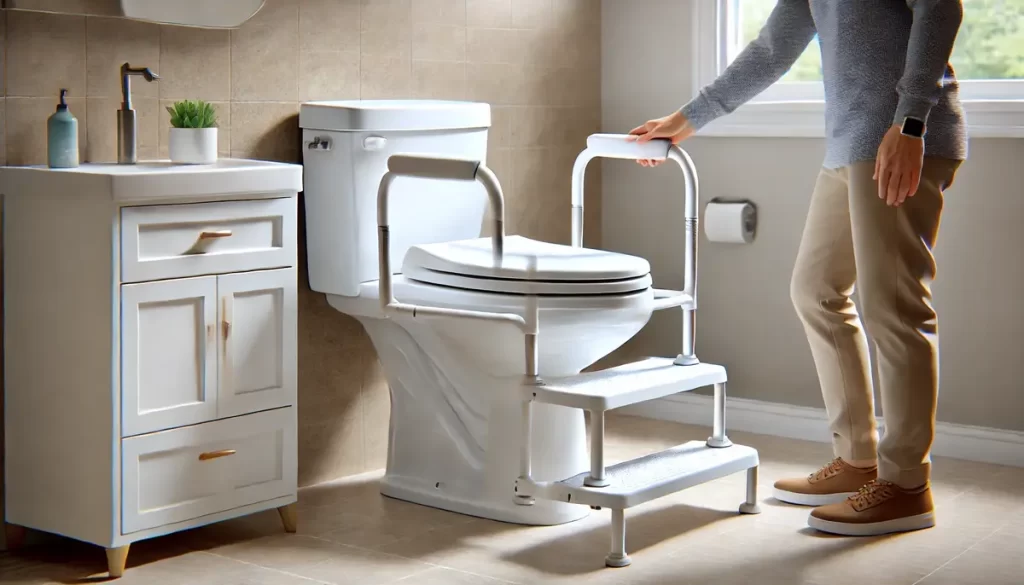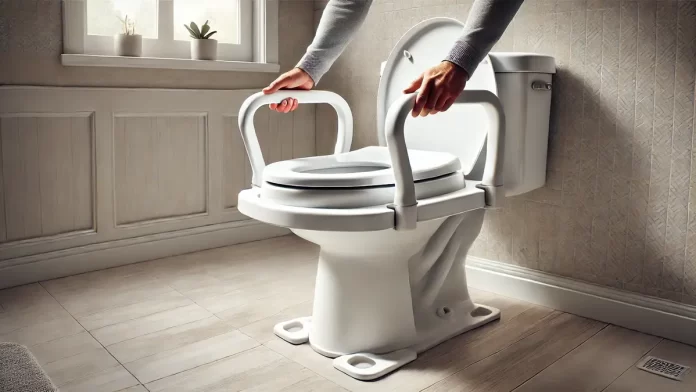Raised toilet seat is a huge difference in bathroom accessibility especially for people that have mobility problems or post surgery. In this article, you will learn how to install a raised toilet seat which will be in the form of a small, simple and practical guide to improve your bathroom experience. If it’s for yourself or someone else, this article will be useful as it accurately provides you with easy to follow steps in how to install this sport for yourself or for a loved one.
Why Install a Raised Toilet Seat?
Raised toilet seats can be easily installed and then make the bathroom safer and more accessible for those people with limited mobility. Elevated toilet seats lift the bowl of the toilet, allowing for people to sit down without strain and stand up without issue. In addition, this installation also helps prevent accidents in the bathroom while reducing the need to bend or overextend your body.

Types of Raised Toilet Seats
Let’s look at the various types of raised toilet seat. The handles of some provide additional stability, while others have a knob or clamp mechanism to seal the seat. Due to this, it’s important to choose the right type for your toilet and the user’s need. Longer toilet seat risers are meant for longer toilets, and standard risers will work on most toilets.
Tools You’ll Need for Installation
Get the tools ready before the installation is started. Therefore, you’ll need a screw driver, pliers and possibly a wrench. If you buy some toilet seat risers, you may or may not have an installation kit with it, but it always pays to have some extra tools on hand. Some manufacturers may also include foam pieces with certain raised toilet seats to provide extra comfort and support.
Learn More: Residential Tankless Toilets: A Practical Way to Save Space and Water
Finding the Exact Toilet Seat Riser for Your Needs
Selecting the perfect toilet seat riser can greatly enhance comfort and accessibility. Models like the toilet seat riser with arms or handles offer added assistance, ideal for the elderly or those with mobility issues. Choices such as the elongated toilet seat riser or 2 inch toilet seat riser are accessible for different setups, and brands like Carex and Drive provide well founded choices. Whether you need a handicap toilet seat riser or a portable toilet seat riser, these products are planned to enhance safety and ease of use.
Specialized Toilet Seat Risers for Extra Support/Comfort
For those with specific requirements, risers such as the 3 inch or 6 inch toilet seat riser can suggest added height. Products like the bariatric toilet seat riser and inflatable toilet seat riser cater to different body types and portability requirements. Moreover, the hinged and padded toilet seat risers provide satisfaction and comfort. Whether you’re looking for a round toilet seat riser, toilet seat riser with a lid, or even one for a bidet, there are plenty of options to suit your preferences.
Step 1: Prepare Your Bathroom
Your bathroom needs to be ready before installing a raised toilet seat. Make some room around the toilet to work on. Also remember to wipe down the toilet bowl in case a clean surface is needed for installation. Don’t neglect to walk around any existing damage on the toilet seat screws and bowl.
Step 2: Remove the Existing Toilet Seat
First, you’ll need to unscrew and remove your existing toilet seat for the installation to start. At the back of the toilet, most toilet seats are secure with screws or bolts. Unscrew them using a screwdriver or, if you can’t open a door, using pliers while setting the seat and screws aside for safe keeping. Manufacturers provide instructions when your toilet seat riser requires the use of your existing toilet seat.

Step 3: Positioning the Raised Toilet Seat
Since then, place the raised toilet seat over the toilet bowl. Make sure you fix the seat correctly and align it properly to the bowl. Ensure that you install toilet seat risers with handles or arms tightly before placing the seat over the toilet. It will add extra stability for folks who require extra assist.
Step 4: Securing the Toilet Seat Riser
After finishing, position the raised toilet seat and secure it in place with the provided screws or clamps. Too many raised toilet seats have side knobs that need tightened. Check that the seat doesn’t wobble. Secure the seat onto the toilet bowl by pulling the knob or lock mechanism forward and tight. You always follow the warnings and instructions of the manufacturer for the safest installation.
Common Mistakes to Avoid During Installation
Perhaps the most common mistake we see when installing a raised toilet seat is not torquing the screws/knobs enough. Over time, this may loosen the seat and make the seat unstable. The second issue is not aligning the seat to the toilet bowl, making the seat uncomfortable as we use it. Follow all the instructions provided and make sure there aren’t any of those typos.
Maintaining Your Raised Toilet Seat
Here is one of the most significant parts that keeping your raised toilet seat maintained increases your usage duration. Regularly check screws and knobs to ensure they are tight and will not break at the worst possible times. A pavement should clean the toilet seat, as well as its bowl intermittently. A good rule of thumb is to replace the seat if the seat becomes damaged or if the foam padding wears out.
FAQs on Installing Raised Toilet Seats
- Just how high should a raised toilet seat be when you need one? The amount of height varies for different user needs. Toilet seats that raise you up are available in varying heights with 2 inch risers being common.
- Can I install a raised toilet seat on a toilet of any kind? Raised toilet seats are available for most toilets; however, elongated models are available for non-standard toilets.
- Is there anything special required to install a raised toilet seat? All the tools are included (or some raised toilet seats do) with the installation needed, but if you have a screwdriver and pair of pliers on hand you’ll be OK.
- Can you remove a raised toilet seat easily? Most raised toilet seats can even be removed: unscrewed, unclamped from the toilet.
- Do they have raised toilet seats with handles? Many raised toilet seat models, as well, have handles or arms for additional support.
Key Points to Remember:
- Raised toilet seats raise the toilet bowl to a height easily used by people with mobility problems.
- Select the best toilet seat riser for your user’s and your toilet.
- Before you start our installation process, be sure to gather all necessary tools.
- Posts the suggested given screws, clamps, or knobs on the seat tightly.
- Keep yourself raised toilet seat maintained and cleaned so that it is in good position.
When installed properly, a raised toilet seat can drastically increase bathroom safety and comfort and is well worth considering for any home.
FAQs
So, what even IS a raised toilet seat and why would I need one?
Raised toilet seat is an elevated toilet seat that comes fitted on your existing toilet seat for easy accessibility for the elderly and people with the limited mobility of any kind. A toilet seat riser of this type can offer some relief from forced strain on the knees and hips and may be an important item for the elderly, for those recovering from surgery, and anyone else who has trouble sitting down or standing up from a typical toilet.
And how do I choose the right raised toilet seat for my existing toilet?
Think about the type of toilet you have (standard or elongated), plus the height you need, when choosing a raised toilet seat. Work out what height and style of raised toilet seat you need and check the product buldings first. In addition, look for whether the toilet seat and lid can accommodate toilet seat risers you have in mind.
Is there anything that I need to install a raised toilet seat other than toilet bolts?
You usually need a standard screwdriver to then tighten the screw and nut that are where the seat attaches. Designers created raised toilet seats for easy installation and they do not require any specific tools or hardware other than what comes in the packaging.


